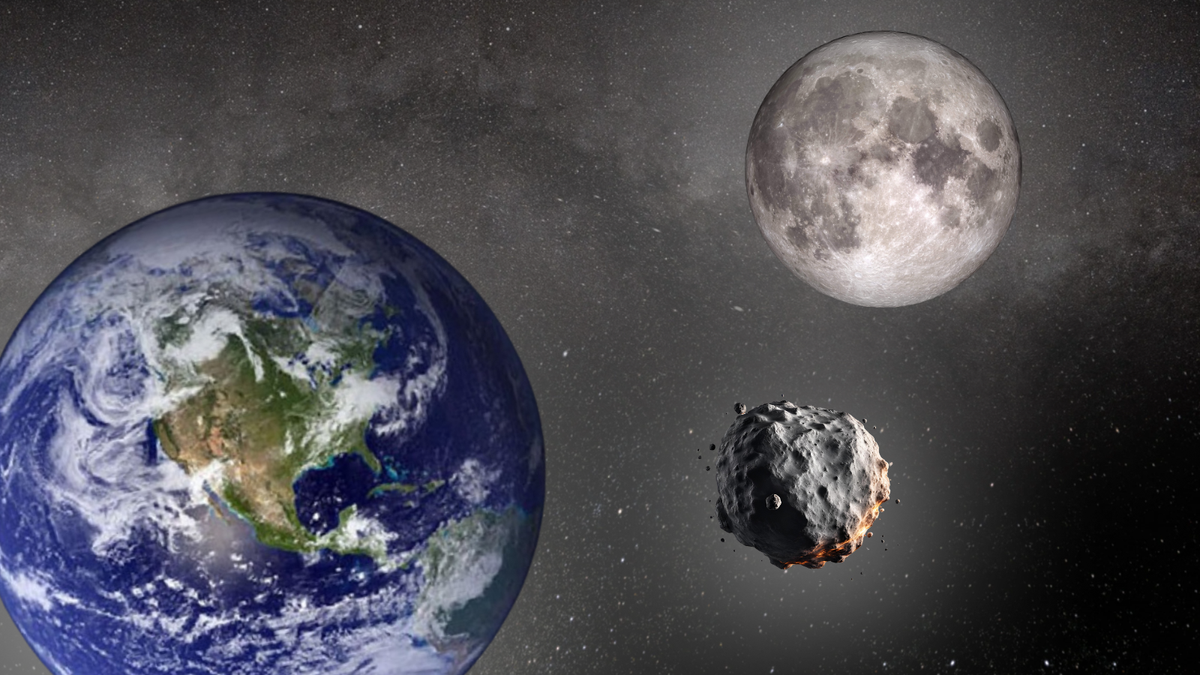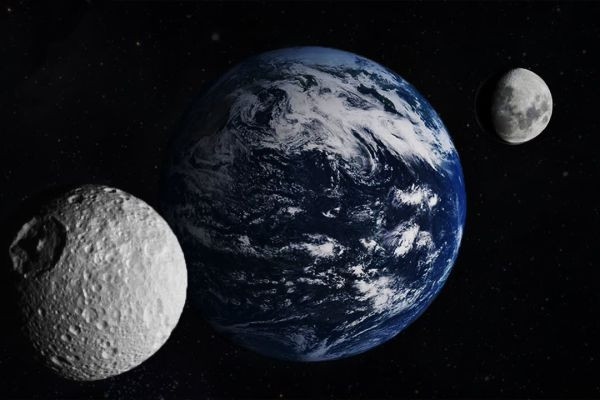For centuries, Earth's moon has fascinated humans as our closest celestial neighbor, lighting up the night sky and influencing tides, cultures, and mythology. However, recent scientific discussions have stirred excitement around the idea of Earth gaining a "second moon." This claim, though not as simple as it might sound, is grounded in fascinating astronomical phenomena. While Earth will not suddenly have a large, visible moon like the one we are familiar with, the concept of a second moon points to a variety of intriguing celestial objects that have temporarily orbited our planet or might do so in the future.
In this article, we will explore the science behind Earth’s so-called "second moon," the objects that sometimes orbit our planet, and the implications of such a discovery.
What Is a "Second Moon"?
When people talk about a second moon, they aren’t referring to a massive, luminous satellite akin to our primary moon suddenly appearing in the night sky. Instead, they are referring to small celestial objects, often asteroids or space debris, that can get temporarily captured by Earth’s gravity, creating what astronomers call a "mini-moon."
These mini-moons are typically small, irregularly shaped asteroids that are drawn into Earth’s gravitational influence for short periods, ranging from a few months to a few years. Eventually, they either escape Earth’s gravity or burn up in the atmosphere. While these objects are not permanent, their presence sparks the possibility of a transient, second moon.
Recent Discovery of a Mini-Moon: 2020 CD3
One of the most notable mini-moons was discovered in 2020 and was given the name 2020 CD3. This small object, believed to be a captured asteroid, was spotted by astronomers Kacper Wierzchoś and Teddy Pruyne at the Catalina Sky Survey in Arizona. With a diameter of just 1.9 to 3.5 meters (6.2 to 11.5 feet), 2020 CD3 was much smaller than Earth’s primary moon and far less visible to the naked eye. It orbited Earth for a brief time before eventually slipping out of Earth’s gravitational grasp and continuing its journey around the Sun.
Although 2020 CD3 was not the first mini-moon to be discovered, it reinvigorated discussions about these temporary satellites and the idea of Earth’s ability to capture small objects in its orbit. The discovery demonstrated how dynamic and ever-changing Earth’s relationship with space can be.
The Science Behind Mini-Moons
The capture of mini-moons like 2020 CD3 is a result of complex gravitational interactions between the Earth, the Sun, and the object in question. When a small asteroid comes close to Earth, it can be caught in a delicate gravitational tug-of-war between Earth and the Sun. If the asteroid’s velocity and trajectory are just right, it can become temporarily trapped by Earth’s gravity and enter into an orbit around our planet.
These objects tend to be in very elongated orbits, and their trajectories are often unstable, which is why they only remain in orbit for a limited time before being ejected back into space or falling into the atmosphere. In most cases, mini-moons are too small to have any noticeable effect on Earth, and they are often difficult to detect due to their size and dimness.

Is There a Permanent Second Moon?
While mini-moons are temporary visitors, the question arises: Could Earth ever have a permanent second moon? In the distant past, Earth may have had additional natural satellites. Some scientists theorize that when the Moon formed around 4.5 billion years ago, there may have been other debris from the collision that created it, some of which could have formed temporary moons. However, gravitational interactions with the Sun and other planets likely destabilized their orbits, causing them to either crash into Earth or escape into space.
In the modern era, it is highly unlikely that Earth will ever capture a second large, permanent moon like the one we currently have. The gravitational dynamics of our solar system make such an event extremely improbable. The stability of Earth’s current moon, its large size relative to the planet, and its distant orbit all contribute to the unlikelihood of a second, permanent moon forming or being captured.
Artificial Moons and Space Debris
Interestingly, humans have already created "artificial moons" in the form of satellites and space debris. Thousands of artificial objects currently orbit Earth, from communications satellites to defunct spacecraft and fragments of broken equipment. These objects, although created by humans, share some characteristics with natural moons—they orbit Earth and remain in space for extended periods, though they don’t match the scale or impact of a natural satellite.
Space agencies like NASA and private companies such as SpaceX continue to launch new satellites, contributing to the growing cloud of space debris. While these objects are important for communication, navigation, and research, their increasing numbers also present challenges, such as the risk of collisions and the need for future space-cleanup initiatives.
Could a Second Moon Affect Earth?
Given that mini-moons are small and short-lived, their effect on Earth is minimal. Unlike our primary moon, which influences tides and has had a significant cultural and scientific impact, mini-moons do not possess enough mass to affect the Earth in any noticeable way. The Moon's gravitational pull is responsible for the rise and fall of ocean tides, but a mini-moon’s gravitational influence would be too weak to have any discernible impact.
However, the discovery and study of mini-moons can provide valuable scientific data. These small objects can offer insights into the early solar system and the processes that shaped the formation of planets and moons. Additionally, they can serve as potential targets for future space missions. For instance, NASA’s Asteroid Redirect Mission (ARM) once proposed capturing a small asteroid and placing it in orbit around the Moon for study.
Mini-moons could also become potential candidates for asteroid mining, a concept that involves extracting valuable resources from asteroids for use on Earth or in space exploration. With advancements in space technology, mini-moons might one day serve as convenient sources of materials like metals and water.
The Future of Earth’s Mini-Moons
As our detection technologies improve, astronomers are likely to discover more mini-moons in the coming years. These objects offer exciting opportunities for scientific research and exploration. Some scientists suggest that mini-moons could be used as stepping stones for future space missions, providing a natural and relatively accessible destination for robotic or crewed missions.
While the idea of Earth gaining a large, permanent second moon remains a distant possibility, the presence of mini-moons and their transient orbits highlight the dynamic and ever-changing nature of our solar system. These small, captured objects remind us that Earth is not isolated in space, but rather part of a larger cosmic dance, with various celestial bodies occasionally crossing its path.
Conclusion
The concept of Earth gaining a second moon, while intriguing, is rooted in the temporary capture of small celestial objects like asteroids, rather than the formation of a new, permanent satellite. These mini-moons, such as 2020 CD3, offer valuable insights into the gravitational dynamics of Earth’s orbit and the nature of small bodies in the solar system. While they may not affect life on Earth in the way our primary moon does, their discovery and study provide exciting opportunities for future scientific exploration and space missions.
In the end, the idea of a second moon reminds us of the complexity and wonder of the cosmos, where even small, fleeting objects can tell us something profound about the nature of our planet and its place in the universe. While Earth’s second moon may only be a temporary visitor, its arrival is a testament to the ongoing mysteries that the universe has yet to reveal.



